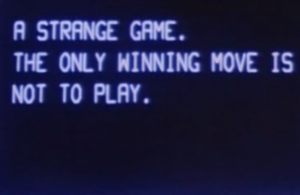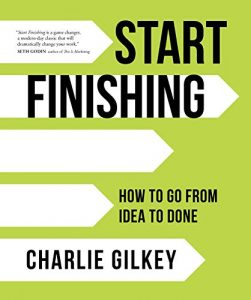 There’s a story of the two watchmakers that Herbert Simon tells in The Sciences of the Artificial to illustrate the relevance of intermediate structure and hierarchy. Here’s the story
There’s a story of the two watchmakers that Herbert Simon tells in The Sciences of the Artificial to illustrate the relevance of intermediate structure and hierarchy. Here’s the story
There once were two watchmakers, named Hora and Tempus, who made very fine watches. The phones in their workshops rang frequently and new customers were constantly calling them. However, Hora prospered while Tempus became poorer and poorer. In the end, Tempus lost his shop. What was the reason behind this?
The watches consisted of about 1000 parts each. The watches that Tempus made were designed such that, when he had to put down a partly assembled watch, it immediately fell into pieces and had to be reassembled from the basic elements. Hora had designed his watches so that he could put together sub-assemblies of about ten components each, and each sub-assembly could be put down without falling apart. Ten of these subassemblies could be put together to make a larger sub-assembly, and ten of the larger sub-assemblies constituted the whole watch
Simon uses the story to illustrate why structure and hierarchy emerge in complex systems. Or why good designers build intermediate structure into their systems.
One interesting aspect of this fable is that Simon talks of two levels of intermediate structure. This suggests that there are criteria to invoke when making design choices about the size and complexity of intermediate structures.
I’ve been thinking about intermediate structure lately in the context of how to be more effective in doing knowledge work. I’ve touched on working papers recently and I wanted to revisit the topic from the perspective of stability and intermediate structures.
I’ve been blogging for a long time and writing at multiple lengths–blog posts, teaching cases, articles, books. I use or have used all sorts of tools in the process
- mindmaps (both by hand and by software),
- outlines (again, both by hand and by software)
- word processors
- text editors
- bibliographic/reference management software
- wiki software
- specialized note taking tools (Evernote, nvAlt, etc.)
The space between glimmer of an idea and finished product is what draws my attention now. Although I’ve been nibbling around the ideas of working papers, most of what I’ve discovered and examined has talked about writing process. Freewriting, shitty first drafts, mindmapping techniques. What’s starting to come into view is the structure side of the question.
For the longest time, I’ve worked and thought in terms of deliverables and working backwards from some vision of an end product. That works well enough for blog posts and most client reports. At the longer scales of a book, on the other hand, working backwards breaks down. You know that the outlines and mindmaps are necessary but they morph as the process unfolds and as your understanding of the deliverable evolves.
The notion of a permanent and evolving collection of notes and treating those notes as “first class objects” that should be designed to stand on their own is a new to me. When I started blogging the idea of a commonplace book was one idea for an organizing container for developing ideas and lines of thinking. Jerry Weinberg’s Weinberg on Writing: The Fieldstone Method is an approach that I’ve worked to understand and adopt. I’ve certainly recommended it to many colleagues. More recently, Sonke Ahrens’s How to Take Smart Notes: One Simple Technique to Boost Writing, Learning and Thinking drew me into the subculture of Zettelkasten.
All of these new ideas still focused mostly on process advice. They fell short on offering insight into the structure of the data and information that you created through the processes. They slide past the data half of the equation and I’m only know coming to see how that has been holding me back.
A collection of permanent notes is a handy thing to have around. But, without attention to intervening stable structures we are still fighting the problem of building a 1,000 piece watch in a single step.
There are some hints scattered in what I’ve found so far. The Zettelkasten sub-culture references the notion of special forms of structure notes, for example. In my own work. I’ve started to recognize the emergence of recurring themes and am trying to develop techniques to capture and track them.
I feel I am at the stage of recognizing that there’s a problem to be addressed. I can see the gap between a collection of random notes and the organized flow of a final deliverable. Now I’m looking to design or discover stable structures that can serve as waypoints where I can pause before I have worked out what the final deliverables might be. Is this a problem that others have also encountered? Are there concepts and structures I can learn and adapt?
 “Julie! It’s 10th grade algebra!”
“Julie! It’s 10th grade algebra!” Developing an interest in the interplay between technology and organizations isn’t something you know is going to happen when you’re in middle school. There’s no teacher or coach to emulate. There’s no hero’s quest to set out on. But there have to be roots.
Developing an interest in the interplay between technology and organizations isn’t something you know is going to happen when you’re in middle school. There’s no teacher or coach to emulate. There’s no hero’s quest to set out on. But there have to be roots. After church yesterday, I had a quick conversation with a relatively new parishioner. I had learned that Ben was from St. Louis, as was I. This was a perfect opening to ask the first question that always gets posed whenever two St. Louisans meet: “Where did you go to school?”
After church yesterday, I had a quick conversation with a relatively new parishioner. I had learned that Ben was from St. Louis, as was I. This was a perfect opening to ask the first question that always gets posed whenever two St. Louisans meet: “Where did you go to school?” “But, you’re not an asshole!?”
“But, you’re not an asshole!?” There’s a story of the two watchmakers that Herbert Simon tells in
There’s a story of the two watchmakers that Herbert Simon tells in 